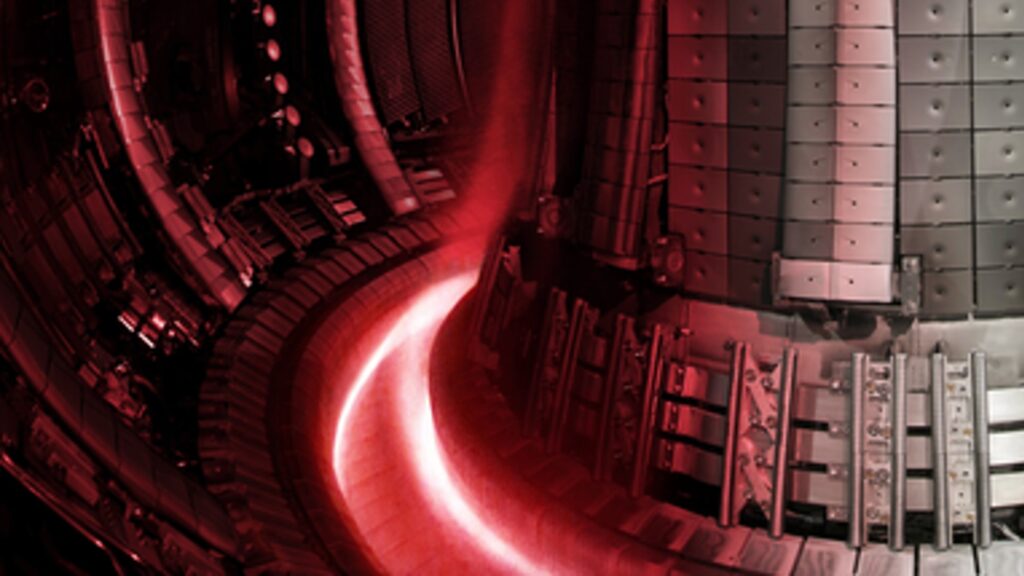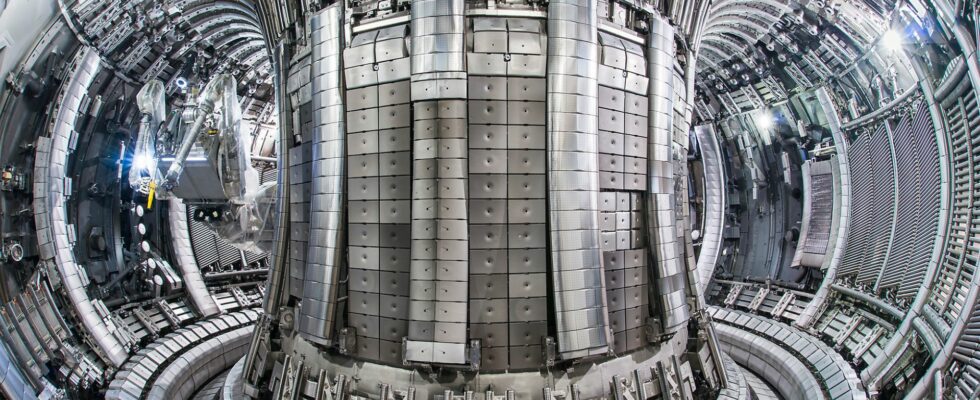The JET nuclear fusion reactor reached 69 megajoules for 5 seconds. This is decisive for advancing scientific research on “artificial suns”, with the immense ITER project in our sights.
Nuclear fusion is a promise, that of a powerful and carbon-free energy source. This type of reactor reproduces the functioning of a star, which is why these reactors are nicknamed “artificial suns”. No installation of this type can be used today: they are scientific prototypes. The JET (Joint European Torus) is one of them.
“ We’ve done things we’ve never done before “, declared the scientists of this laboratory based in the United Kingdom, communicating their new advances on February 8, 2024. This reactor is for the moment the largest tokamak in the world — a donut-shaped reactor, where the reaction of fusion caused by magnetic confinement is absorbed by the walls, for conversion into heat.
69 megajoules for 5 seconds
The JET laboratory has broken its own record. Their artificial sun actually produced 69 megajoules of energy for five seconds — with just 0.2 milligrams of fuel. This is much more than the 59 megajoules established in 2022.

On the other hand, you have to keep your feet on the Earth: that in itself is not enough. This power is much lower than the daily consumption of a single household occupied by two people. The objective is indeed to reach hundreds of megajoules, and to do so in a stable manner, no longer over a few seconds.
But the objective of these reactors, for the moment, is not yet to supply anything with electricity, but to advance research towards this goal. This record is therefore important, a new brick. Already on the human level – because 300 scientists of different nationalities collaborated to get there – and on the technical level. “ We can reliably create fusion plasmas using the same fuel mix used by commercial fusion power plants, a testament to the advanced expertise developed over time », attests Fernanda Rimini, from the JET laboratory, in the press release.
Precursor of ITER
JET also serves as a precursor to even more ambitious installations, notably ITER. Under construction in Bouches-du-Rhône, and involving 35 partner countries, it will be the largest tokamak ever built. Like JET, it will operate on the basis of deuterium and tritium. ITER will make it possible to test a large number of technologies by pushing energy production and reactor stabilization ever further. The project will notably be able to count on a magnetic system based on superconductivity, which should increase its capacity to generate energy for longer.
Another project, entitled DEMO and whose construction will begin in the 2030s, will succeed ITER: its objective, for its part, will be to prove that we can then transform this energy into consumable electricity.
“Throughout its life cycle, JET has proven remarkably useful as a precursor to ITER”
“ Our successful demonstration of operational scenarios for future fusion machines like ITER and DEMO, validated by the new energy record, inspires greater confidence in the development of fusion energy », Estimates Ambrogio Fasoli, head of the European EUROfusion program.
Same observation for Pietro Barabaschi, Director General of ITER, quoted in the press release: “ Throughout its life cycle, JET has proven remarkably useful as a precursor to ITER: in the testing of new materials, in the development of innovative new components, and nowhere more than in the production of scientific data on deuterium-tritium fusion. » Before adding that these results will have an impact “ direct and positive” on ITER, by “validating the path forward and allowing us to progress more quickly towards our performance objectives “.
Subscribe to Numerama on Google News so you don’t miss any news!
